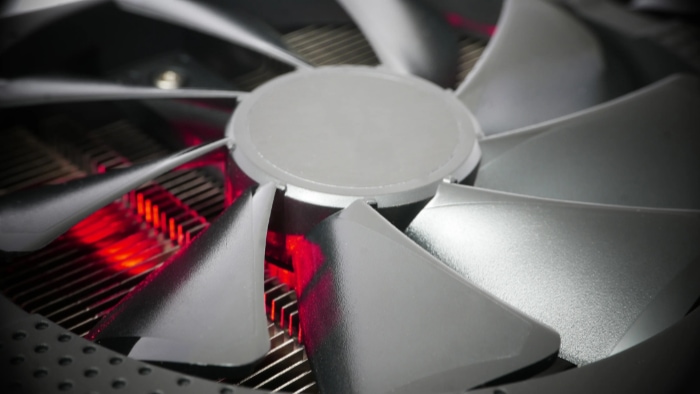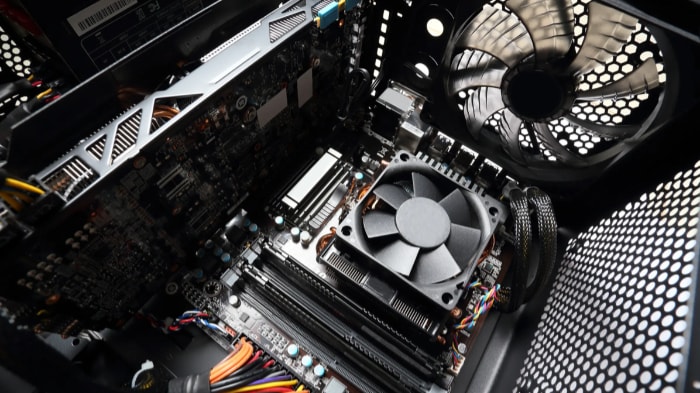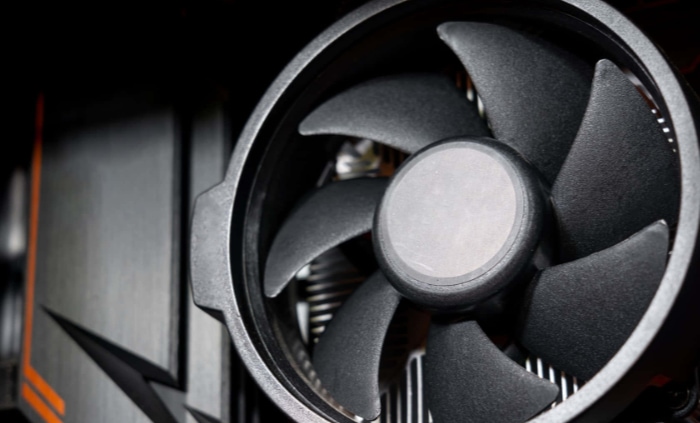Understanding Exhaust and Intake Fans in PCs

Effective thermal management is a cornerstone of any high-performance computer system. Without proper cooling mechanisms, your hardware is susceptible to overheating, compromised efficiency, and even potential damage.
Among the various cooling solutions available, exhaust and intake fans stand as crucial components that govern airflow within a computer case. These fans may seem straightforward, but they serve distinct roles in maintaining an optimal temperature for your system.
What is an Intake Fan?
Intake fans play a critical role in the thermal management of a computer system. These components are designed to pull cool air from the environment into the computer case, thereby reducing internal temperatures and allowing hardware to operate more efficiently.
Definition and Basic Functionality
An intake fan is a mechanical component strategically placed to direct cool air from outside the computer case into the interior. The main function of an intake fan is to lower the internal temperature by bringing in a steady flow of cooler air, which aids in dissipating the heat generated by critical components like the CPU, GPU, and hard drives.
Placement in the Computer Case
Typically, intake fans are located at the front or side of the computer case. The placement allows these fans to pull in air more efficiently, directly cooling the interior components.
Some high-end computer cases even feature specially designed vents or filters at the intake positions to further facilitate the entry of cool air while filtering out dust and debris.
Operational Specifications
When selecting an intake fan, there are several specifications to consider. These include:
- RPM (Revolutions Per Minute): This determines the speed at which the fan blades rotate. A higher RPM often translates to better airflow but may produce more noise.
- CFM (Cubic Feet per Minute): This measures the volume of air that the fan can move per minute. A higher CFM rating indicates a more powerful fan capable of moving more air, which generally results in more effective cooling.
- Noise Levels: Measured in decibels (dB), this specification informs you about how loud the fan will be during operation. Lower dB values mean quieter operation.
Importance of Compatibility
It's essential to ensure that the intake fan you choose is compatible with your computer case and other cooling components. This includes checking the size of the fan (usually expressed in millimeters), the type of connector it uses, and whether your motherboard can control its speed.
How Intake Fans Work with Other Cooling Components
Intake fans rarely work in isolation. They are often part of a larger cooling strategy that may include exhaust fans, CPU coolers, and sometimes liquid cooling systems.
The key is to maintain a balanced airflow within the computer case. This balance allows the intake fans to draw in fresh air effectively, which is then utilized by other cooling components to maintain optimal temperatures.
What is an Exhaust Fan?
Exhaust fans serve as another crucial component in a computer's cooling system, functioning as the counterpart to intake fans. While intake fans draw in cool air, exhaust fans expel hot air from the inside of the computer case to the outside environment.
This activity helps in regulating internal temperatures and sustaining optimal hardware performance.
Definition and Primary Role
An exhaust fan is specifically designed to move warm air out of the computer case. Located typically at the rear or sometimes at the top of the case, these fans create an airflow pathway that helps to remove heat generated by the system's components.
Location within the Computer Case
The placement of exhaust fans is generally at the rear or the top of the computer case, as these positions facilitate the most effective expulsion of hot air. The rear position is particularly strategic as it aligns with the system's natural airflow, allowing for the warm air generated by internal components to be pushed out directly.
Key Specifications to Consider
When choosing an exhaust fan, several key features should be taken into account. These are:
- RPM (Revolutions Per Minute): This measures the speed of the fan. While a high RPM can indicate strong airflow, it might also mean increased noise levels.
- CFM (Cubic Feet per Minute): This rating quantifies the volume of air that a fan can move. A higher CFM is generally preferred for more effective heat dissipation.
- Noise Level: Usually expressed in decibels (dB), this informs you of the operational noise. A lower dB rating suggests quieter operation, which might be crucial for work or gaming environments.
Compatibility Factors
Just like with intake fans, compatibility is an important aspect when selecting an exhaust fan. It's necessary to confirm that the fan size aligns with your case's mounting points.
Also, understanding the connector types and compatibility with your motherboard can save you from potential hassles during installation.
Synergy with Other Cooling Components
Exhaust fans are often part of a broader cooling strategy. They work in conjunction with intake fans, CPU coolers, and possibly liquid cooling setups to create a balanced and efficient cooling system.
Properly positioned exhaust fans ensure that the cool air brought in by the intake fans is fully utilized to cool down internal components before being expelled.
Key Differences Between Exhaust and Intake Fans

Exhaust and intake fans might appear similar at first glance, but their roles within a computer's cooling system differ significantly. These differences extend from their basic functions and ideal placements within a computer case to more nuanced aspects like air pressure balance.
Function and Direction of Airflow
The primary difference between exhaust and intake fans lies in their roles within the airflow cycle. Intake fans draw in cool air from the external environment into the computer case.
In contrast, exhaust fans remove warm air from inside the case, expelling it into the surrounding area. These functions are opposite but complementary, contributing to a balanced and effective cooling system.
Location in the Computer Case
Intake fans are usually positioned at the front or side of the computer case, where they can most efficiently pull in fresh air. On the other hand, exhaust fans are generally located at the rear or top of the case, optimizing the removal of warm air from inside the system.
Air Pressure Implications
Intake and exhaust fans contribute differently to the internal air pressure of a computer case. Intake fans increase positive air pressure by pulling in air, whereas exhaust fans contribute to negative air pressure by pushing air out.
A balanced combination of the two types of fans is often sought to maintain neutral air pressure, which optimizes cooling efficiency.
Specification Considerations
When selecting either an intake or an exhaust fan, different specifications might be prioritized. For instance, intake fans often benefit from higher CFM ratings to maximize the volume of cool air entering the system.
Conversely, exhaust fans might emphasize higher RPM to swiftly expel hot air, although this could increase noise levels.
Interaction with Other Cooling Components
While both types of fans work within the same cooling framework, their interactions with other components like CPU coolers or liquid cooling systems can differ. Intake fans generally work to supply these components with cool air, whereas exhaust fans help to remove the warm air they generate, thereby enhancing their cooling effectiveness.
The Concept of Positive and Negative Air Pressure
Air pressure within a computer case is a significant yet often overlooked aspect of thermal management. Positive and negative air pressure conditions contribute differently to the system's cooling efficiency and the accumulation of dust.
Positive Air Pressure Defined
Positive air pressure occurs when the volume of air drawn into the computer case by intake fans exceeds the volume expelled by exhaust fans. In this scenario, the surplus air is usually forced out through unsealed openings and vents in the case.
Positive air pressure is often desired for its ability to limit the ingress of dust, as the higher internal pressure pushes air—and dust—out through any unfiltered openings.
Advantages and Disadvantages of Positive Air Pressure
Advantages
- Reduced Dust Accumulation: The higher internal pressure helps to push air out, limiting the amount of dust entering the system.
- Cooler Component Zones: More intake fans mean that specific hardware components can receive more direct cooling.
Disadvantages
- Potential for Hotspots: Positive air pressure can sometimes result in pockets of stagnant air, which may lead to localized overheating.
- Noise Levels: Higher pressure can sometimes contribute to increased operational noise from the fans.
Negative Air Pressure Defined
Negative air pressure is the opposite of positive air pressure, occurring when the volume of air expelled by exhaust fans is greater than the volume drawn in by intake fans. This creates a vacuum effect, pulling air in through any unfiltered openings and vents in the case.
Advantages and Disadvantages of Negative Air Pressure
Advantages
- Efficient Heat Removal: The higher number of exhaust fans can remove heat more efficiently from the case.
- Reduced Risk of Hotspots: The vacuum effect helps to eliminate pockets of stagnant air, thus reducing the risk of hotspots forming.
Disadvantages
- Increased Dust: The vacuum effect pulls in air through unfiltered openings, increasing the risk of dust accumulation.
- Dependence on Exhaust Fan Efficiency: A system with negative air pressure relies heavily on the performance of its exhaust fans, which can be problematic if they are not efficient.
Achieving Balanced Air Pressure
Striking a balance between positive and negative air pressure is key to optimizing a computer's thermal performance. A balanced system typically aims for neutral air pressure, wherein the intake and exhaust rates are roughly equal.
This allows for efficient cooling without the drawbacks of excessive dust accumulation or the formation of hotspots.
Best Practices for Using Exhaust and Intake Fans

Effective thermal management in a computer involves more than just installing a set of fans; it requires thoughtful planning and configuration. Exhaust and intake fans are key elements of any cooling solution, but their optimal use involves adhering to certain best practices.
Determine the Optimal Number of Fans
One of the first decisions to make is how many fans your system requires. This often depends on several factors, including the computer's workload, the presence of other cooling solutions like liquid cooling systems, and the physical dimensions of the case.
As a general rule, a standard home or office PC may need at least one intake and one exhaust fan, while gaming or workstation setups might require more.
Position Fans Strategically
Placement is key when it comes to fans. Intake fans are usually more effective at the front or sides of the case, where they can pull in fresh air.
Exhaust fans typically perform best when located at the rear or top of the case to expel hot air. The objective is to create a streamlined airflow path that covers all components.
Consider Fan Specifications
Different fans come with varying specifications such as RPM (Revolutions Per Minute), CFM (Cubic Feet per Minute), and noise levels. It's crucial to select fans that meet your specific needs.
For example, if rapid heat expulsion is necessary, a high RPM exhaust fan might be the best choice, while a high CFM intake fan would be effective at moving a large volume of air into the case.
Optimize Air Pressure
Based on the number and type of fans you have, strive to maintain balanced air pressure within the case. This can be achieved by either equalizing the intake and exhaust or by creating a slightly positive air pressure to reduce dust accumulation.
Monitoring temperature levels can help in adjusting fan speeds or adding more fans as needed to maintain this balance.
Regular Maintenance and Cleaning
Even the most efficient fan setup can suffer from accumulated dust and debris. Regular cleaning ensures that fans operate at peak efficiency.
Compressed air cans can be an effective tool for removing dust from fan blades and grills. Keep in mind that excessive dust can not only reduce cooling efficiency but also increase noise levels.
Conclusion
Optimal thermal management in a computer system involves a multifaceted approach that includes understanding the unique roles and characteristics of exhaust and intake fans. From the direction of airflow and case positioning to the implications of positive and negative air pressure, each element plays a crucial part in the system's overall cooling efficiency.
Additional considerations such as fan specifications and regular maintenance further enhance performance. By adhering to best practices, one can not only extend the longevity of computer components but also create a more efficient and stable computing environment.


